There are a staggering number of animals in Yellowstone National Park. Many people consider Yellowstone to be home to one of the most diverse animal populations in the lower 48 states, especially when you consider the sheer number of mammals that live there! But what types of animals call Yellowstone their home, and just how many might you see on your visit to the park?
In this article, we will go over some of the most commonly seen animals in Yellowstone National Park, including where you might see these animals. We will also list the most common birds, carnivores, and ungulate species in Yellowstone, including species that potentially migrate in and out of the park each year. Let’s get started!

The best location for viewing animals and wildlife in Yellowstone depends on what animal you are hoping to see, as well as the time of year that you choose to visit.
©Susanne Pommer/Shutterstock.com
| Yellowstone National Park | Animal Facts |
| Number of Mammal Species | 67 |
| Number of Bird Species | 300 |
| Number of Reptile Species | 6 |
| Number of Fish Species | 16 |
| Most Popular/Common Animals | Elk, bison, deer, songbirds, rabbits, bighorn sheep |
| Top Predators | Grizzly bears, black bears, gray wolves, cougars, coyotes, lynx, wolverines |
Most Common Animals in Yellowstone National Park
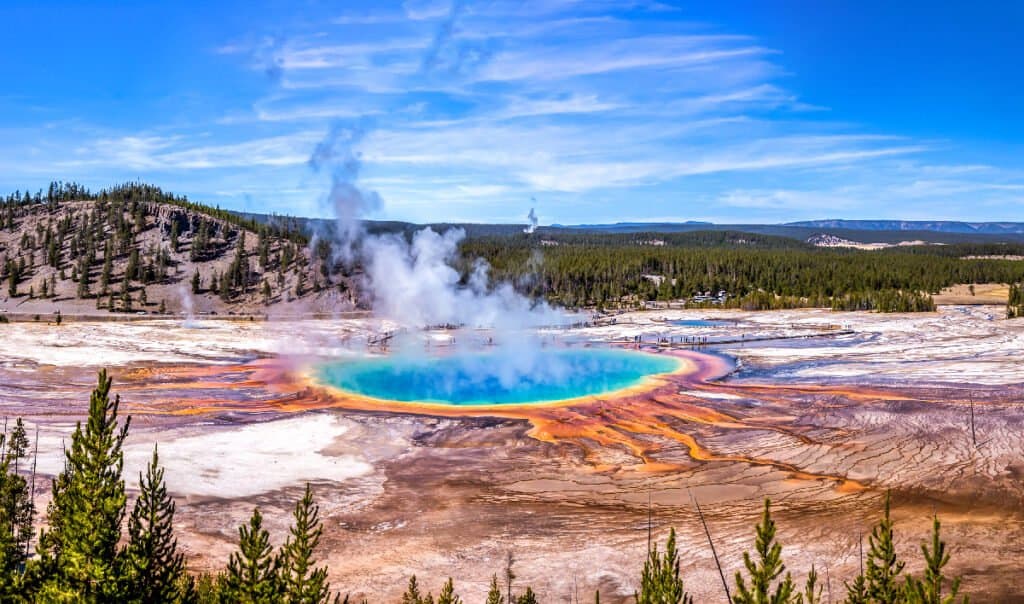
Yellowstone National Park is home to several ungulate species, including grizzly bears, pronghorns, white-tailed deer, badgers, otters, and badgers.
©Lillac/Shutterstock.com
If you are planning a National Parks tour, you may want to set aside some time for more than just hiking. There are a number of animals that you can expect to see on your trip to Yellowstone National Park. Here are some of the most common species, and where you might be able to spot them!
Bison
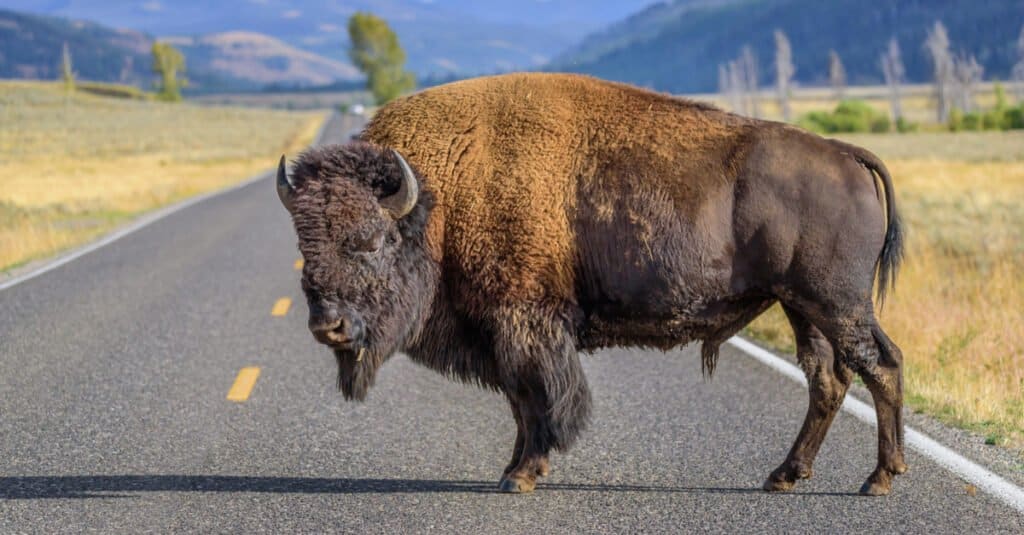
Many people consider Yellowstone to be home to one of the most diverse animal populations in the lower 48 states.
©iStock.com/IngerEriksen
The Yellowstone bison is an icon, and for good reason. Yellowstone National Park is the only location in the United States where bison have lived continuously since the dawn of time, having been hunted to extinction in all other locations. Not only is this their long-term home, it is also an extremely populated home. An estimated 5,000 or more bison live in Yellowstone, and it is basically impossible not to see one!
Elk
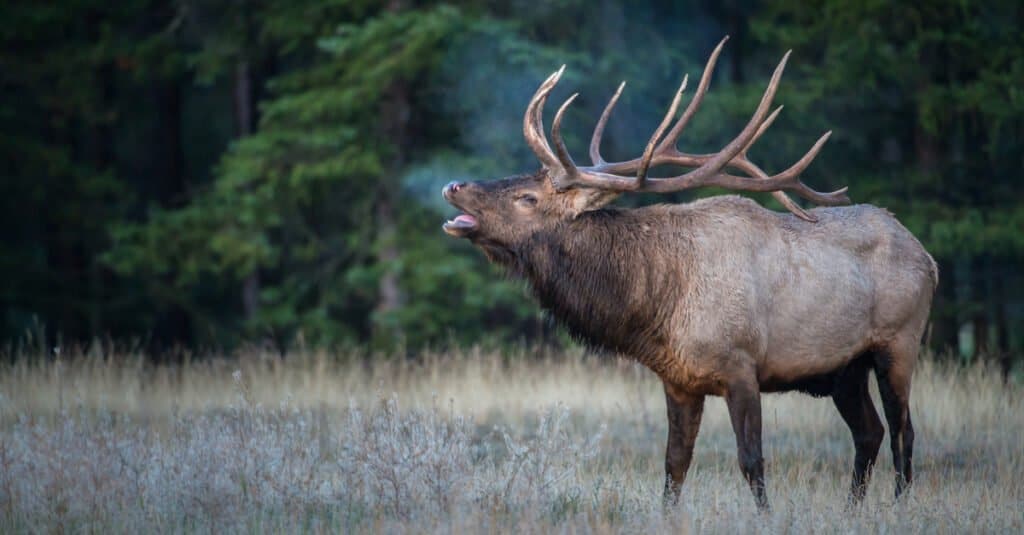
While the winter population dwindles to roughly 4,000, you can expect to see nearly 20,000 elk in Yellowstone during the summer months.
©Ghost Bear/Shutterstock.com
Just as common as bison, the elk population in Yellowstone is flourishing. While the winter population dwindles to roughly 4,000, you can expect to see nearly 20,000 elk in Yellowstone during the summer months. The elk population is a necessary food source for all predators within the park, particularly wolves and bears, and many predators would not survive the winter without this vital resource.
Deer
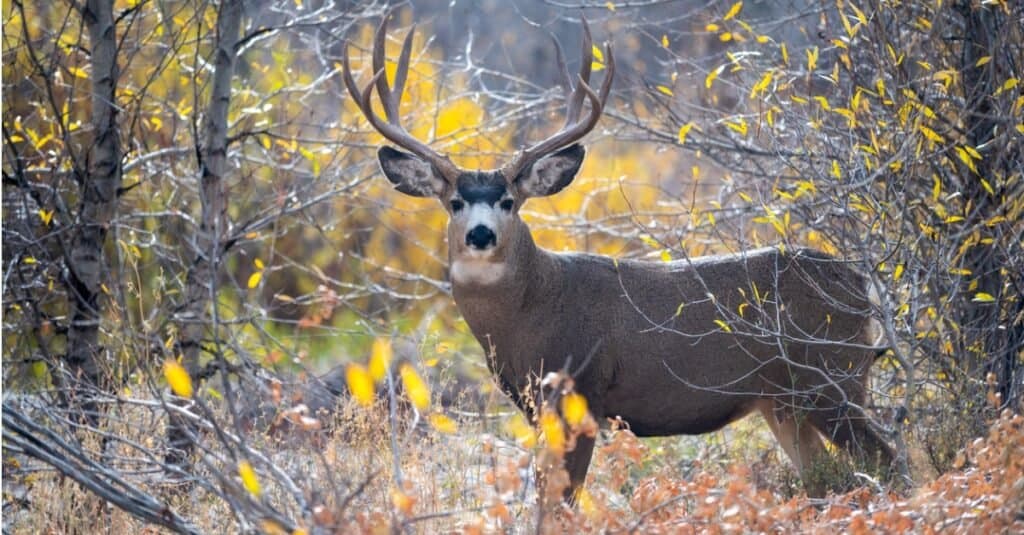
If you consider the expanded deer family, Yellowstone is also home to moose, pronghorn
antelope
, bighorn sheep, and mountain goats.
©iStock.com/EEI_Tony
There are a number of different deer species within Yellowstone National Park, including mule deer and white-taled deer, though mule deer are the most common. If you consider the expanded deer family, Yellowstone is also home to moose, pronghorn antelope, bighorn sheep, and mountain goats.
Songbirds
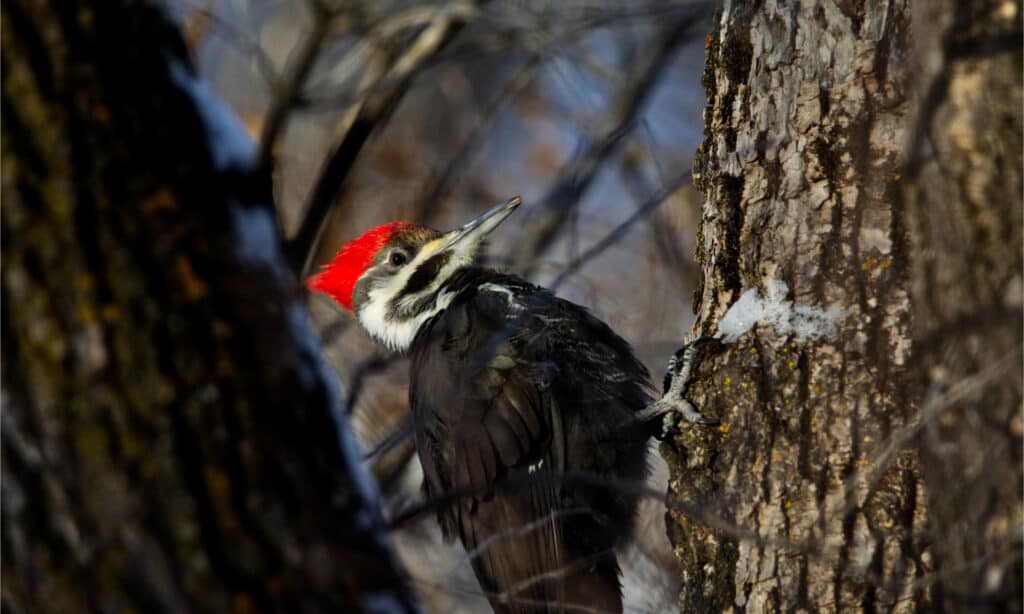
Yellowstone has a birdwatching guide so that you can keep track of all of the birds you see!
©Michael Dante Salazar/Shutterstock.com
Yellowstone has kept bird records since the 1800s, and nearly 150 species of birds nest in the park. However, songbirds are extremely common, especially in the spring and summer months. Some of the most common species include chickadees, sparrows, and woodpeckers, though you will also likely see wetland birds and raptors while visiting. Yellowstone even has a birdwatching guide so that you can keep track of all of the birds you see!
Bears

The Yellowstone ecosystem is extremely balanced, meaning there are a number of predators living within the park to offset the large amount of prey animals within the park.
©BGSmith/Shutterstock.com
While the answer may surprise you, many visitors end up seeing a bear while visiting Yellowstone National Park. There are both black bears and brown bears (also known as grizzly bears) in Yellowstone, with black bears being the more common of the two. Bears have a storied past in Yellowstone, having been fed by visitors up until the 1960s. Nowadays, Yellowstone bears are unlikely to wander up to your car in search of a snack!
What are Some of the Top Predators in Yellowstone National Park?

Yellowstone National Park takes great pride in their animal and wildlife populations, especially the gray wolf population.
©MedstockPhotos/Shutterstock.com
The Yellowstone ecosystem is extremely balanced, meaning there are a number of predators living within the park to offset the large amount of prey animals within the park. While you are less likely to see all of these predators during your visit, you may still get a chance to view them in this National Park!
Some of the top predators or carnivores found in Yellowstone include:
- Grizzly bears
- Black bears
- Mountain lions or cougars
- Lynx
- Gray wolves
- Wolverines
- Coyotes
Yellowstone National Park takes great pride in their animal and wildlife populations, especially the gray wolf population. In fact, Yellowstone is one of the best places in the entire world to view gray wolves in their natural habitat, ever since they were reintroduced into the ecosystem in 1995!
Where Can I View Wildlife in Yellowstone National Park?
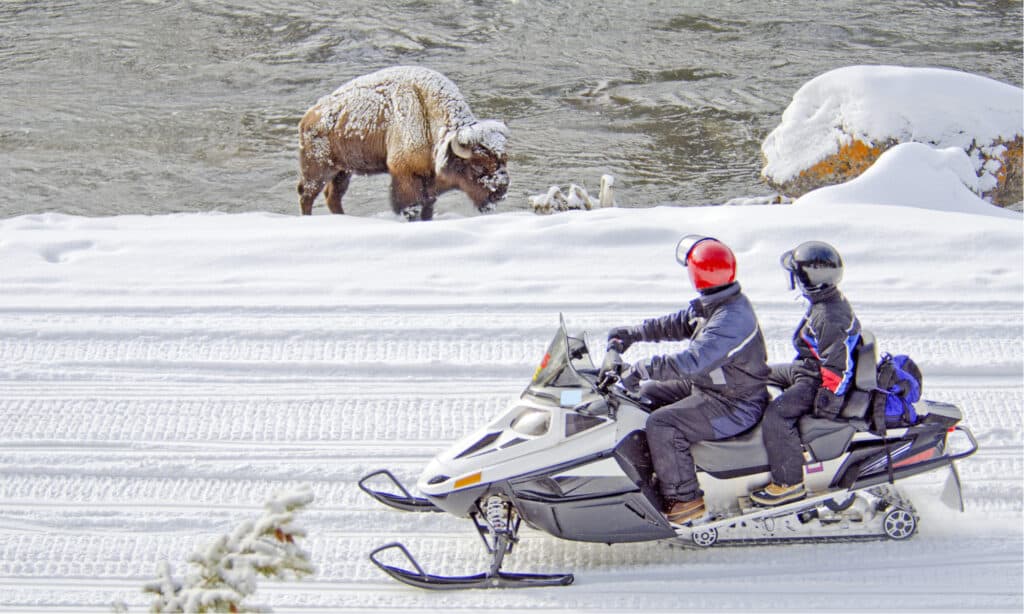
One of the most popular wildlife viewing locations in the park, Hayden Valley offers you both predator and prey.
©Carolina K. Smith MD/Shutterstock.com
The best location for viewing animals and wildlife in Yellowstone depends on what animal you are hoping to see, as well as the time of year that you choose to visit. For example, you are unlikely to see any bears or fish during the wintertime, as it is peak hibernation for these types of animals! However, here are some of the top locations for viewing animals in Yellowstone, along with what wildlife you are likely to see.
Hayden Valley
One of the most popular wildlife viewing locations in the park, Hayden Valley offers you both predator and prey. Bison, elk, deer, bears, and even wolves are seen here, and it’s definitely worth a stop. Located almost dead center within the park, this location is a must-see.
Lamar Valley
Similarly to Hayden Valley, Lamar Valley is perfect for viewing a variety of animals. You can expect to see elk, bison, deer, bears, wolves, bighorn sheep, and other migratory species there, depending on the time of year. Speaking of time of year, Lamar Valley is located near the Northeastern entrance of the park, which is open year round.
Fishing Bridge

While it may not need saying, it is important to keep in mind that Yellowstone is not a zoo- it is a wild, natural area, full of animals that call this place home.
©iStock.com/SL_Photography
If you are hoping to see grizzly bears on your trip to Yellowstone, check out the Fishing Bridge area of the park. Located in the East and right near Yellowstone Lake, Fishing Bridge is ideal for bear viewing as well as, you guessed it, fishing! This area also has a diverse bird population, especially raptors who love to eat fish.
Mammoth Hot Springs
Not only does Mammoth Hot Springs have an inn, visitors center, and gift shop- it also has a number of animals nearby. You’ll see the typical bison, elk, and deer in this area, but you may also catch a black bear rooting around in a trash can! This area is also open year round, and it is one of the first places you can stop, should you choose to enter the park from the North entrance.
North Entrance
Speaking of the North entrance, this location is ideal for a number of reasons. For one, it is one of only two entrances that is open during Yellowstone’s harsh winter season, and it sees a lot of animal traffic. Many migratory ungulates find their way to this area, including mountain goats, bighorn sheep, elk, and deer. This may also bring predators, so keep your cameras out!
Safety First Around Animals in Yellowstone National Park

You should try to keep at least 25 yards between you and any non-predator animal in Yellowstone, including bison and elk.
©Lorcel/Shutterstock.com
While it may not need saying, it is important to keep in mind that Yellowstone is not a zoo- it is a wild, natural area, full of animals that call this place home. You are the guest in their place of residence, and it is important to remember that as you travel. Yellowstone Park Rangers have a number of safety protocols in place for you to consider too:
- Always maintain a safe distance from any animal. You should try to keep at least 25 yards between you and any non-predator animal, including bison and elk. When it comes to wolves and bears, you should maintain a minimum of 100 yards of distance from them for your own safety!
- Know how to camp in bear country. If you have an overnight camping reservation in Yellowstone National Park, make sure you know how to safely camp around bears. This includes utilizing bear boxes for your food, wearing unscented body products, and more. And, of course, never feed any wildlife you see in the park!
- Drive carefully and safely. Vehicular accidents are one of the leading causes of animal death within Yellowstone National Park. While accidents happen, always be sure to obey traffic laws, including speed limits. You should also maintain a safe distance away from animals while you are in your car too, and be sure to pull off of the road for any wildlife viewing so you are not holding up traffic.
- If an animal startles due to your presence, you are too close. Remember that you are a guest in this natural area; in fact, it is illegal to willfully remain near an animal that is uncomfortable by your presence. If an animal is disturbed by your being there, make sure you give them plenty of space. This includes trying to take a photo for your social media profile- don’t disturb the wildlife just to get a good shot!
The photo featured at the top of this post is © Michael Hinkle/Shutterstock.com
Thank you for reading! Have some feedback for us? Contact the AZ Animals editorial team.






